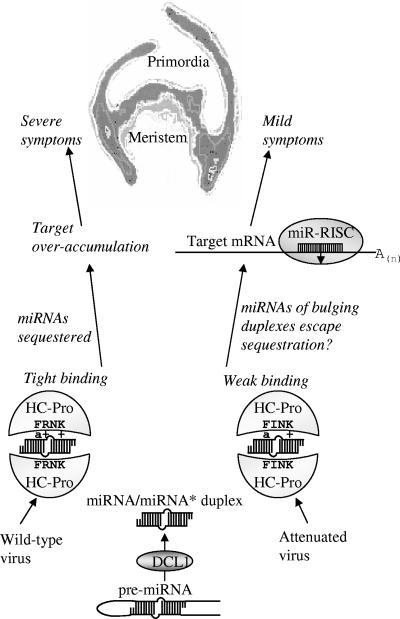FIG. 9.
Model of HC-Pro influence on symptom expression. miRNAs are processed from a hairpin precursor (pre-miRNA) by a DICER-like enzyme (DCL1) to make duplex miRNA/miRNA*. In uninfected plants, miRNA is incorporated into the RISC, and miRNA* is degraded. RISC then down-regulates the expression of a target mRNA, complementary to the miRNA, through cleavage. In potyvirus-infected plants, HC-Pro binds the miRNA/miRNA* duplex, effectively sequestering miRNA and causing ectopic expression of target mRNAs. In wild-type HC-Pro, the FRNK motif contains an aromatic amino acid residue (a) and two positively charged amino acid residues (+) which are involved in duplex binding. Charge reduction in the ZYMVFINK-attenuated virus causes lower affinity for miRNA/miRNA* duplexes, especially for those which contain bulges or multiple mismatches, allowing adequate RISC function and, thus, mild symptom expression.

